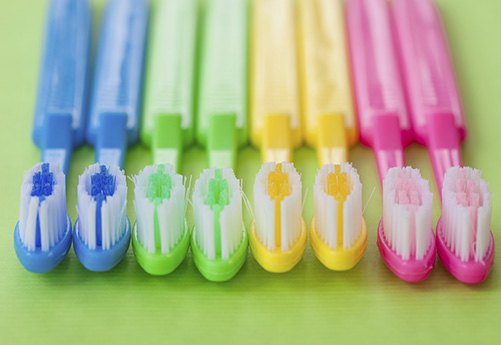There’s a lot to know when it comes to caring for your child’s pearly whites. Here are a few of the questions we often hear from parents.

When should I take my child to the dentist for the first check-up?
In order to prevent dental problems, your child should see a pediatric dentist when the first tooth appears or no later than his/her first birthday. See our First Visit page for more information.
Do I stay with my child during the visit?
We invite you to stay with your child during the initial examination and during treatment appointments. However, there may be circumstances when we suggest you allow your child to accompany our staff through the dental experience. We can usually establish a closer rapport with your child when you are not present. Our purpose is to gain your child’s confidence and overcome apprehension. However, if you choose, you may come with your child to the treatment room. For the safety and privacy of all patients, other children who are not being treated will need to remain in the reception room with a supervising adult.
What is the difference between a pediatric dentist and a family dentist?
Pediatric dentists are the pediatricians of dentistry. A pediatric dentist has two to three years specialty training following dental school and limits his/her practice to treating children only. Pediatric dentists are primary and specialty oral care providers for infants and children through adolescence, including those with special health needs.
Toothpaste: when should we begin using it and how much should we use?
The sooner the better!
- Starting at birth, clean your child’s gums with a soft infant toothbrush or cloth and water.
- Starting at the age of 2, parents should use a tiny smear of fluoride toothpaste. Brush baby teeth twice daily using a soft, age-appropriate sized toothbrush.
- Between the ages of 3 to 6 years old, the amount of fluoride toothpaste can be increased to a pea-size dollop.
- Until the age of 8 years old, young children do not have the ability to brush their teeth effectively and, therefore, need the help of an adult.
- Children should spit out and not swallow excess toothpaste after brushing.
How do dental sealants work?
A sealant is a plastic material that is put on the chewing surfaces of back molars. The sealant flows into the deep grooves and fissures acting as a barrier. This barrier shuts out food particles and bacteria that could get caught in the teeth, causing cavities. The application is fast and comfortable and can effectively protect teeth for many years.
Does my child need braces?
As your child grows, you may notice that there is not enough space for the new permanent teeth to come in. This leads to crowding and bite issues. This is often noticed between the age of 6-12 years. Your child’s bite and alignment is evaluated at every check up visit and details are shared with you about the proper timing of treatment.
What do I do in a dental emergency?
If your child is having a dental emergency, it is important to contact your pediatric dentist immediately.
Please call our office at 913-871-5771. If it is after hours, please follow the instruction on our phone message.


